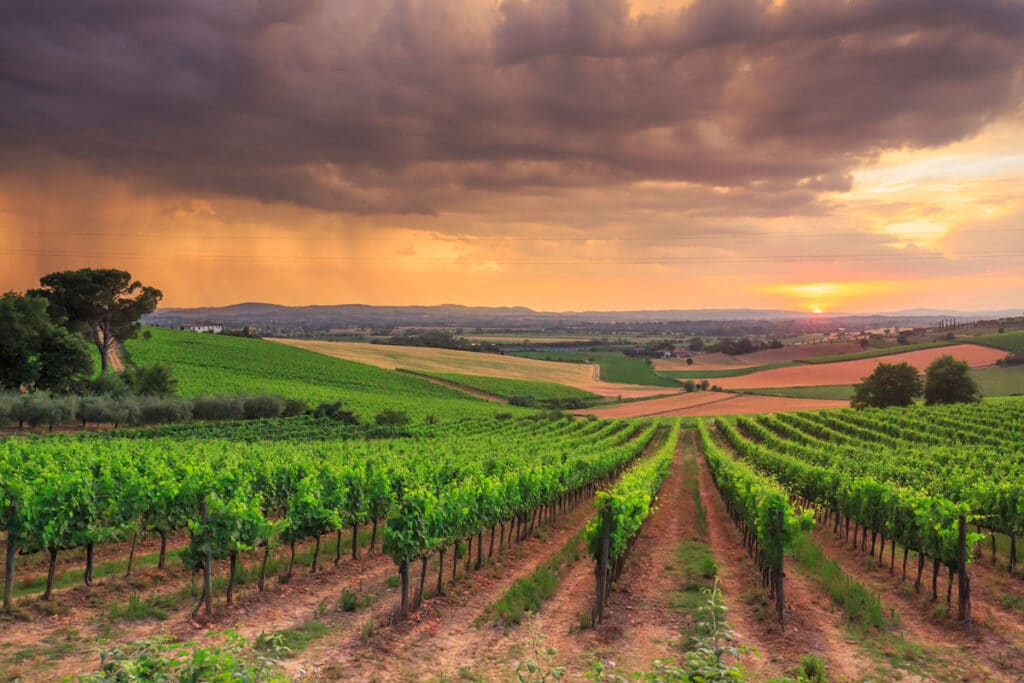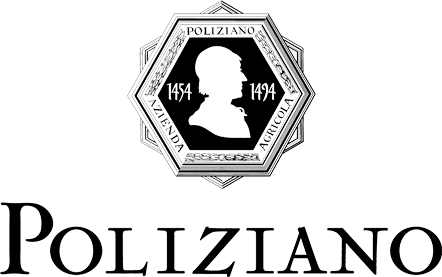About Poliziano
Founded in 1961 by Dino Carletti, the Poliziano estate is a perfect example of how a relentless quest for perfection has achieved remarkable results. Starting with only 54 acres in the commune of Montepulciano, the estate has now grown to over 640 acres under the direction of Dino’s son, Federico Carletti. While Carletti’s children—Francesco and Maria Stella—who represent the next generation are diligently studying to assume roles in the business, Carletti avidly keeps an eye on the future of their winery. He is an agronomist, but he prefers to think of himself as a farmer because he is convinced that great wines originate in the vineyard. In addition to his superior knowledge of the vineyards, his enthusiasm for his land and creating a superior product are infectious.
Carletti’s work at Poliziano estate has always been focused on achieving perfection with as little intervention as possible. While this sounds counterintuitive—it has worked. Over the years, he has eliminated less favorably positioned sites and replanted where the soil and climate were optimal. The selection of clones—many from the estate’s own original plant material—the planting layouts, rootstock choices, pruning methods and training systems are all meticulously chosen. Dense plantings, but only up to a maximum of 2,000 plants per acre, are harvested parcel by parcel in every vintage at Poliziano. This is to pay respect to the different terroirs that exist in Montepulciano. Today, Poliziano produces more than 65,000 cases from about 400 organically farmed acres in Montepulciano, nearby Cortona and coastal Tuscany’s Maremma region. Most of it is Sangiovese. Solar panels power more than 20% of the winery.
In the winery, the same attention to detail is in place, with multiple selections and the use of an optical sorter which allows for small-batch vinifications. However, for the top-end cuvees, Carletti prefers to rely on the human hand to sort. Wood regimes are chosen with an eye to preserving the fruit in the wine, not overpowering it. Multiple container sizes and varieties of oak complement each parcel that ages in the gravity-fed winery.
Carletti, ever the perfectionist yet ever the student, has augmented his learning by his collaborations with Carlo Ferrini and Maurizio Castelli, two Tuscan masterminds renowned for their work with the Sangiovese grape. Together they have all worked to further the renaissance of Sangiovese in Montepulciano.
Situated at the center of the commune of Montepulciano, the estate’s various soil compositions help to divide it into important sections: Valiano, Lama, Casale, Pozzi, Caggiole and Asinone. The latter two are responsible for the estate’s most precious single-vineyard wines. Asinone, first released in 1983 as Vigna Asinone Riserva, has evolved into the crown jewel vineyard of the estate, winning Tre Bicchieri as Vino Nobile di Montepulciano DOCG “Asinone.” Caggiole, which was the source of single bottling in the late ’80s and ’90s, will once again return as a focus wine. With the rebirth of Caggiole and their dedication to the Sangiovese variety, they are paving the way for other monovarietal crus of Sangiovese.
As the former president of the Consorzio del Vino Nobile di Montepulciano from 2008 to 2013, Carletti is well-positioned to help lead a group of producers called the Alliance. This small group aims to restore honor to the wines from this denomination. Although the DOCG regulations allow producers to blend up to 30 percent other grapes (both Italian and International varieties), each of the six members has committed to producing a single-vineyard wine from 100 percent Prugnolo Gentile (Sangiovese). From the 2015 vintage on, these pure Sangiovese wines will feature the word “Nobile” in large type on their labels and will carry the group’s logo; the first were released in 2018.
Always with an eye to supporting the community and keeping the commune of Montepulciano vibrant, Carletti owns a wine boutique in Montepulciano. Featuring the family’s wines and the estate’s olive oils, the shop also carries interesting Montepulciano-logoed items. Perhaps the most intriguing feature of the tiny little shop is the floor. Carletti installed large glass circles over archeological ruins that were found as the shop was being renovated. Vino Nobile lovers can gaze down at an ancient part of Tuscany’s history while sipping or shopping. Hospitality Poliziano has invested in the development of beautiful accommodations near the winery, close to the lovely hill town of Montepulciano and convenient as well to dramatic Cortona, Lake Trasimeno, and the city of Arezzo. The villa contains 5 rooms for guests in the middle of vineyards, with facilities for dining and wine tasting. The winery and its dedicated staff are pleased to continue their tradition, over the years of offering visitors the warmth, beauty, and great wines of Tuscany.



One of Montepulciano's reference-point producers